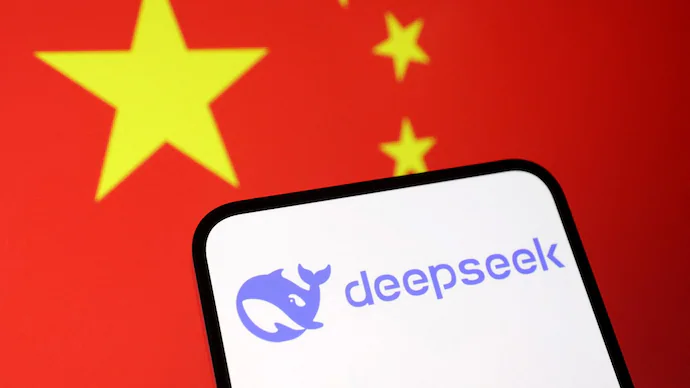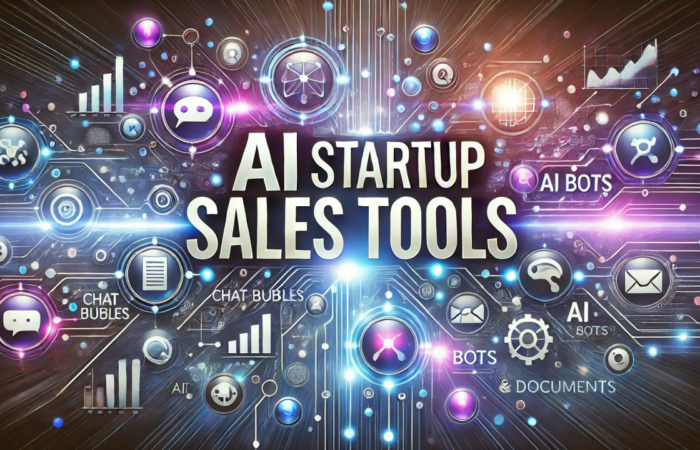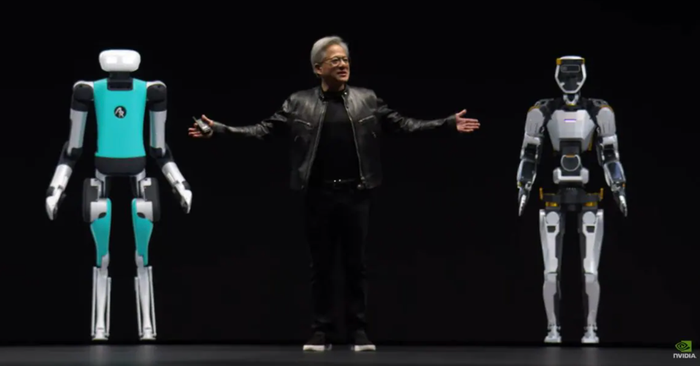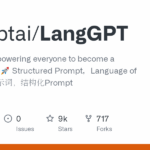
DeepSeek AI has made an explosive entry into the AI space with its chatbot, DeepSeek R1, which has already become the most downloaded free app on the U.S. iOS App Store. This rapid rise is not just a story of innovation; it has sent shockwaves through the global tech market, with major players like Nvidia and Microsoft facing significant losses.
Within days of its launch, DeepSeek wiped out nearly $1 trillion in market value from U.S. tech companies. The disruption underscores the growing influence of Chinese AI firms and raises critical questions about the future of AI dominance, affordability, and geopolitical dynamics.
DeepSeek AI, What About It?
DeepSeek AI, a Chinese artificial intelligence startup, has emerged as a formidable disruptor in the global AI race. It has done what Silicon Valley giants said was impossible—building a reasoning AI model that rivals OpenAI’s best models while costing a fraction of the price.
Unlike its competitors, DeepSeek’s approach focuses on fundamental reasoning improvements, which have historically been one of AI’s biggest weaknesses. Instead of simply scaling up model size like OpenAI or Anthropic, DeepSeek R1 incorporates explicit reasoning paths, making its answers more structured, logical, and interpretable.
DeepSeek R1: A New Approach to AI Reasoning
One of the most impressive things about DeepSeek R1 is its ability to disclose reasoning steps transparently—a key feature that even OpenAI’s GPT-4 struggles with. Instead of generating a final answer directly, DeepSeek R1 provides step-by-step logical reasoning, making it one of the most interpretable AI models available today. This is a major advantage in applications where explainability and reliability matter, such as finance, law, and enterprise decision-making.
What Sets DeepSeek Apart:
- Ultra-Low Cost Training: DeepSeek trained its model on the equivalent of just $5.6 million rented GPU hours, compared to $600M+ for OpenAI’s GPT-4 and $100M+ for Meta’s Llama 3.1 405B. That’s 1/1000th the cost of OpenAI’s flagship model while still delivering strong performance.
- Mass Adoption & Scalability: With the ability to serve millions of users concurrently, DeepSeek taps into emerging markets often overlooked by Western AI firms. Its infrastructure prioritizes efficiency without compromising performance.
- Radical Cost Efficiency: DeepSeek R1 is not just cheaper to build—it’s cheaper to run. OpenAI charges $100+ per million tokens, while DeepSeek operates at <$4 per million tokens—a 27x cost advantage over OpenAI’s models.
- Open Source & Transparency: Unlike OpenAI’s closed models, DeepSeek R1 is open-source and permissively licensed, allowing developers and enterprises to experiment and build on top of it. This also makes DeepSeek a major challenge to OpenAI’s API-dependent revenue model.
This combination of affordability, advanced reasoning, and transparency makes DeepSeek an appealing alternative to high-cost AI tools, rapidly building its user base and unsettling established players.
Tech Stocks Take a Hit
The market has responded dramatically to DeepSeek’s disruptive entrance, triggering a widespread sell-off in tech stocks, particularly among AI-heavy companies. Investors, already wary of rising competition in the AI space, reacted strongly to DeepSeek’s rapid adoption and cost advantages.
Market Impact Highlights:
Nvidia has now lost over $500 billion in market cap since DeepSeek’s launch. In a single day, shares dropped by 17%, marking the largest single-day market cap loss in history.
Nvidia, a key supplier of AI hardware, saw investor confidence shaken as DeepSeek’s efficiency signaled a potential slowdown in AI-driven chip demand. If AI models can be trained and run at a fraction of the previous cost, the demand for high-performance GPUs could plummet.
Investors are beginning to ask: What if we don’t need as many GPUs—or even as much electricity—to build better models?
Broad Tech Sell-Off: The Nasdaq 100 index dropped by 3%, and the S&P 500 declined by 2%, reflecting widespread investor anxiety.
Microsoft (MSFT) and Alphabet (GOOGLE) also experienced notable declines of 2.6% and 1.8%, respectively, as fears mounted over DeepSeek’s long-term impact on profit margins.
Other AI-exposed stocks, including AMD and Intel, saw sharp declines as investors speculated whether DeepSeek’s model would force competitors to cut prices and rethink AI development costs.
Investor Concerns:
- Profit Margin Pressure: DeepSeek’s affordability is forcing established players to reassess their pricing models. DeepSeek reportedly charges about one-thirtieth of what OpenAI’s comparable operations cost, maintaining only a small profit margin above costs. This challenges competitors to slash prices or lose market share.
- Threat to U.S. AI Leadership: DeepSeek’s rapid adoption signals a broader shift in AI innovation, with Chinese firms challenging Silicon Valley’s dominance. Investors fear this could weaken U.S. firms’ competitive edge globally.
- Valuation Recalibrations: The sudden drop in tech stocks suggests a recalibration of valuations for AI-heavy firms, highlighting market sensitivity to competitive threats.
- Geopolitical Implications: With DeepSeek’s rise, global AI competition has intensified. The U.S. government and regulators may step in to scrutinize AI development partnerships, data privacy laws, and potential trade restrictions on AI hardware exports to China.
This isn’t just competition. This is Sputnik but for AI.
Why DeepSeek is Disruptive
DeepSeek’s success has been driven by its innovative approach to affordability, scalability, and technological excellence, making it a disruptive force in the AI industry.
Low-Cost Model:
- DeepSeek’s freemium approach has redefined affordability in AI. Unlike competitors that rely on expensive subscription models, DeepSeek’s premium tiers are priced 30-50% lower than OpenAI’s GPT-4 plans.
- Experts estimate that Meta’s Llama 3.1 model cost about $60 million in rented GPU hours to train, compared to DeepSeek’s $6 million expenditure for its V3 model—which still managed to outperform Llama on key benchmarks.
Global Appeal:
- Emerging Markets Focus: DeepSeek’s ability to penetrate cost-sensitive markets has been a cornerstone of its strategy. By offering advanced AI capabilities at a lower cost, it has tapped into a vast user base previously excluded from the AI revolution.
- Scalability: The platform’s cloud-based architecture ensures reliability and high performance, even with millions of concurrent users. This scalability has enabled DeepSeek to expand rapidly without facing major technical bottlenecks.
Technological Edge:
- Advanced NLP Algorithms: DeepSeek’s AI model rivals industry leaders in accuracy, contextual understanding, and conversational fluency, delivering high-quality responses.
- Multilingual Capabilities: The platform supports over 50 languages, enabling it to cater to non-English-speaking markets effectively, a feature many competitors lack.
- Customizability: Businesses using DeepSeek can integrate the chatbot into their workflows with minimal friction, further enhancing its appeal.
These factors collectively make DeepSeek a highly disruptive force, challenging the dominance of established players and redefining expectations for affordability, accessibility, and the creation of the best AI models.
What Does the Internet Think…
With DeepSeek’s rapid success, the internet has been buzzing with commentary, memes, and first-hand user experiences. Here are some insights:
- Some users claim DeepSeek R1 processes queries faster than ChatGPT, particularly in non-English languages.
- Others note that DeepSeek’s responses are more filtered, especially around politically sensitive topics.
- Businesses and independent users are praising the affordability of DeepSeek AI compared to OpenAI’s models.
Online discussions highlight a mix of excitement and skepticism, with many eager to see how DeepSeek evolves in the competitive AI landscape. The most fun memes for you:
User’s say this…
The Game is Changing—Fast
Silicon Valley’s AI advantage is evaporating. For years, U.S. tech giants justified high AI costs by arguing that training large-scale AI models required billions of dollars in computing power. DeepSeek has shattered that assumption.
- OpenAI’s GPT-4 cost $600M+ to train.
- DeepSeek’s model? $6M.
That’s 1/1000th the cost.
DeepSeek’s radical efficiency is now forcing tech giants to rethink their strategies. If AI can be built for dramatically less, then:
- Do we need expensive cloud computing infrastructures?
- Will AI-first companies still hold the same pricing power?
- How much will investors continue to pay for AI stocks if costs can be slashed so drastically?
These are the questions keeping Silicon Valley’s biggest players up at night.
Amidst the already interesting debacle,Chinese giant Alibaba releases AI model it says surpasses DeepSeek. CHECK here!
Ethical Concerns and Risks
Real-Time Censorship:
One of the biggest debates surrounding DeepSeek is how it handles sensitive topics. Users have noticed that when the chatbot is asked about issues like the Tiananmen Square protests or Taiwan, it either avoids the question entirely or quickly replaces its response with a vague, neutral message. This isn’t just a glitch—it’s a feature that reflects intentional content moderation.
For people in countries where free speech is valued, this approach feels restrictive and raises red flags about how AI can limit access to information rather than empower users.
Data Privacy Concerns:
Another concern is where the data goes. DeepSeek’s servers are located in China, a country known for its strict data security laws that allow government access to information. This has made users and businesses cautious, especially those handling sensitive data like financial records or intellectual property.
If you’re a company that values privacy, trusting an AI tool that could potentially share your data with a foreign government is a tough sell.
Regulatory Challenges:
Because of these privacy and censorship issues, DeepSeek might face strict regulations in places like Europe and the U.S. Governments could require the company to store data locally or comply with higher privacy standards.
These rules would slow down its expansion and force it to rethink how it operates globally. But it’s not just about rules—it’s about trust. Without addressing these concerns, DeepSeek risks being seen as a tool that’s more about control than innovation.
What This Means Globally:
DeepSeek’s rise is happening at a time when tech and politics are deeply intertwined. Its success could deepen the divide between countries that align with China’s approach to technology and those that prioritize transparency and privacy. This isn’t just about one company—it’s about what the future of AI looks like and who gets to shape it.
Conclusion
DeepSeek AI’s launch has fundamentally altered the AI industry and exposed vulnerabilities in the global tech sector. While its low-cost, high-performance model offers immense potential, ethical concerns, geopolitical tensions, and economic shifts add layers of complexity.
For U.S. tech giants, the rise of DeepSeek is a wake-up call to innovate faster and rethink business models. As the AI race heats up, the industry must strike a balance between affordability, innovation, and trust to navigate the challenges of an increasingly competitive landscape.
The AI game is changing—and fast. What’s your take on this revolution?
Subscribe To Get Update Latest Blog Post









Leave Your Comment: